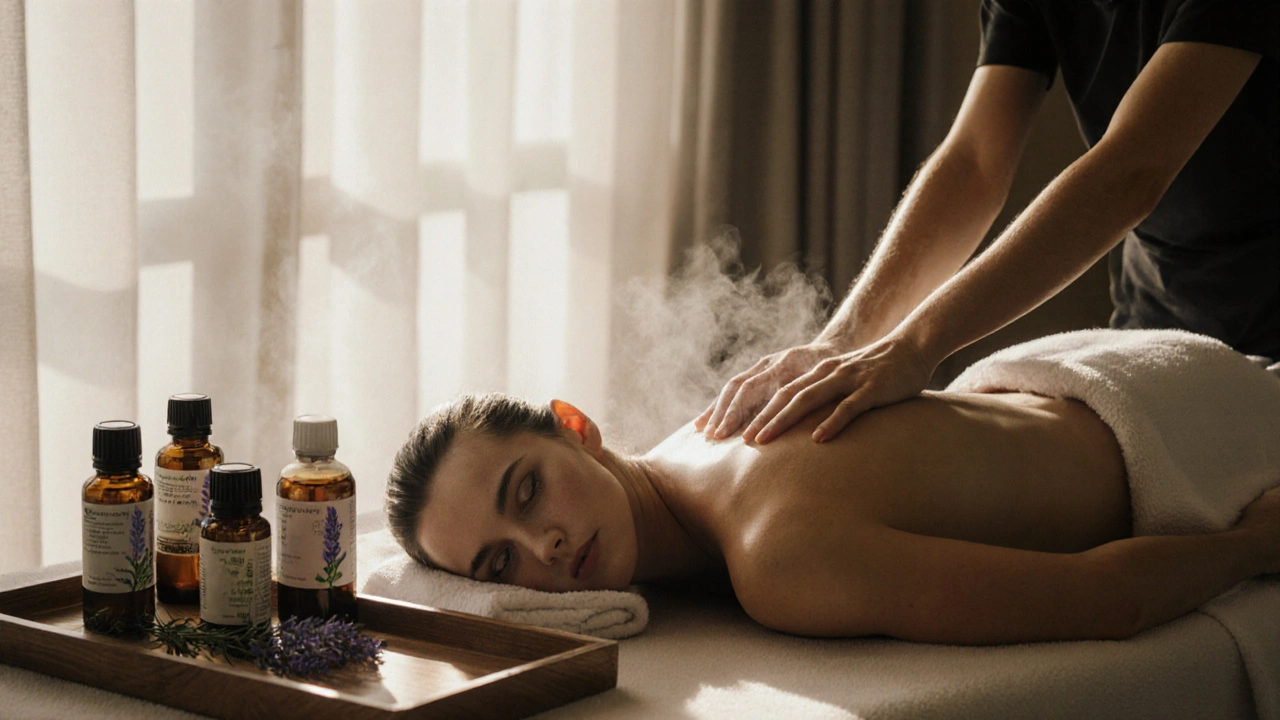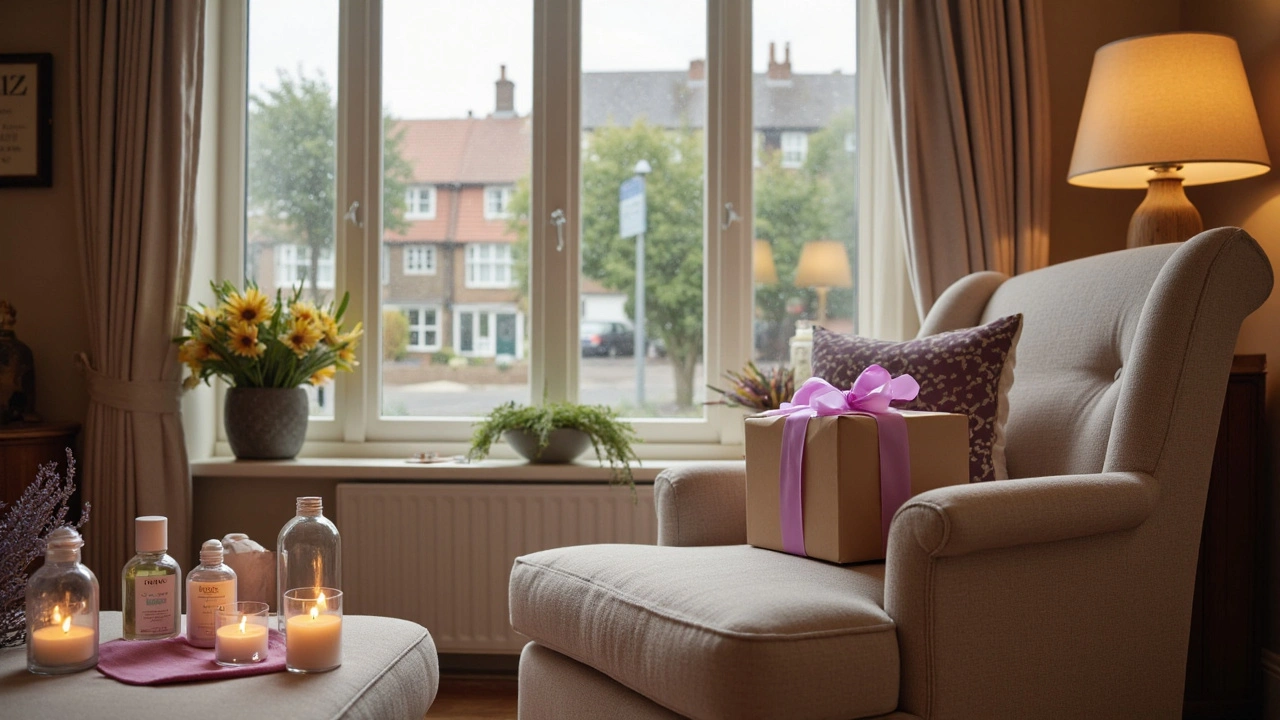Thai Massage: From Tension to Tranquility
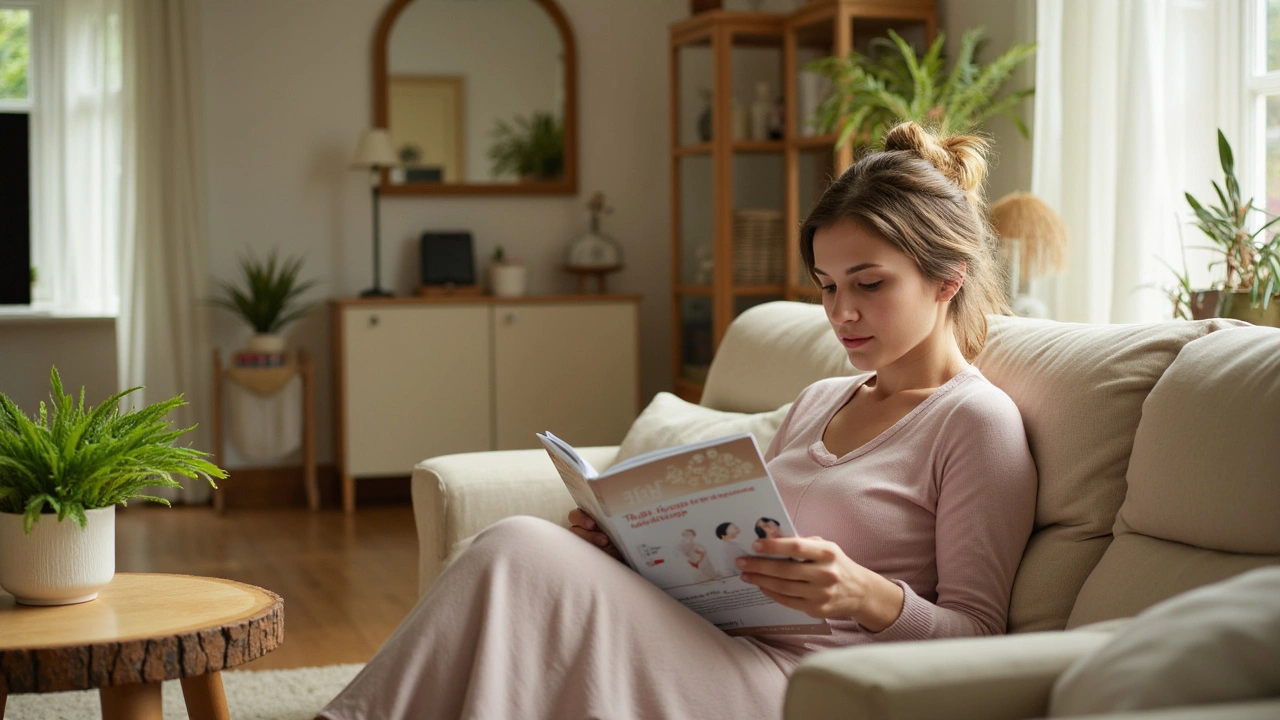
Ever leave a regular massage feeling relaxed, but your muscles still a bit stiff? Thai massage flips the script. Picture a mix of deep stretching, gentle pressure, and slow movements that actually get your body moving, not just lying still like a lump. It’s like yoga, but someone else does the work for you.
This isn’t a new trend. It dates back centuries—think temples in Bangkok, not trendsetters at the latest wellness festival. People in Thailand have used it forever to boost energy, sort out aches, and keep stress at bay. If tension rules your neck, shoulders, or lower back (especially if you sit at a desk like I do), Thai massage might be what you need.
- What Sets Thai Massage Apart
- What Happens During a Session
- Real Health Benefits You Can Feel
- Tips for First-Timers
- Making the Most of It
What Sets Thai Massage Apart
If you’ve had what most people call a massage—oil, Swedish techniques, soft music—you’re in for something totally different with Thai massage. The biggest difference? You stay fully clothed, no oils or lotions needed, and the therapist moves your body through stretches and pressure points, often using their hands, elbows, knees, or even feet.
This style comes from a mix of traditional Thai medicine, Buddhism, and influences from India and China. Thai massage is sometimes called “lazy yoga” because the therapist basically does the stretching for you. It follows energy lines across the body, called “sen” lines, which are a bit like the meridian lines used in acupuncture.
The main goals are to help your body move better, improve flexibility, and dial down stress or pain. Scientific research backs this up: a 2022 study from Chiang Mai University showed people felt less muscle pain and had better range of motion after just one session.
- thai massage uses both acupressure and deep stretches.
- It’s done on a padded mat, not a massage table. You move around—lying on your back, side, stomach, even sitting up.
- Therapists use their body weight for firm, even pressure, instead of just hand strength.
To see how it stacks up, take a look at this:
| Thai Massage | Regular Swedish Massage |
|---|---|
| Clothed Includes stretching No oil used Focus on energy lines Practitioner moves you | Usually unclothed Minimal stretching Uses oil Focus on muscle relaxation You stay still |
So if you want more than just a “rubdown” and are looking for better mobility, reduced pain, or a real energy boost, Thai massage is in a league of its own.
What Happens During a Session
So you’re walking into your first Thai massage. Don’t expect oils or lotions and you definitely won’t be stripping down to nothing—most spots have you wear comfy, loose clothes. The whole thing usually goes down on a firm mat on the floor, not a squishy massage table. This isn’t random; the floor setup gives your therapist more room to stretch you out.
Here’s how a typical session rolls out:
- Stretching first. Your therapist uses their hands, elbows, knees, and sometimes even feet to guide you through deep stretches. You might feel like a pretzel at times, and that’s normal.
- Pressure next. They press along your muscles and energy lines using rhythmic, steady moves. It’s not meant to hurt but if something feels off, say it right away—don’t tough it out.
- Joint moves. Expect some gentle rocking, twisting, and pulling. This helps loosen up joints and gets the blood moving, especially in stiff spots like shoulders and hips.
Most sessions run from 60 to 90 minutes, and it’s not rare for people to doze off, especially once you hit that deep relaxed zone.
| Duration | Clothing | Oil Used? | Setup |
|---|---|---|---|
| 60–90 min | Loose clothes (provided or bring your own) | No | Mat on floor |
One thing to know—don’t eat a heavy meal right before, and tell your therapist about any injuries or sore areas. Being honest makes the session work way better. Afterward, you might feel taller or lighter, and your knots should feel way less stubborn. That’s the magic of Thai massage done right.
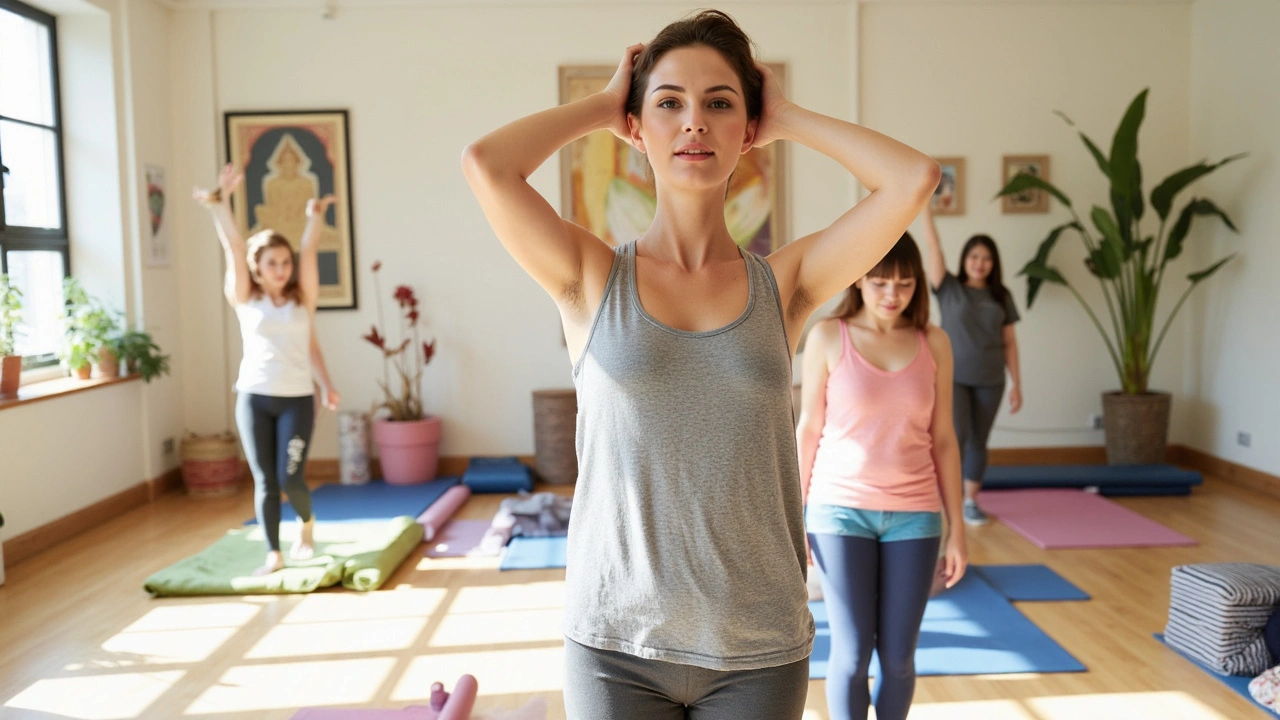
Real Health Benefits You Can Feel
Thai massage isn't just a nice way to unwind—there are real perks to your body and mind. Studies have shown it's super useful for chilling out your nervous system and dialing back stress hormones. In one study from the Journal of Bodywork and Movement Therapies, folks who got a Thai massage saw a noticeable drop in their cortisol levels (that’s the stress hormone everyone talks about) compared to those who just rested quietly.
People who spend hours working at a desk usually complain about neck, shoulder, and back pain. Thai massage is big on deep stretches and pressure points, so it gets into those tight muscles and actually loosens them up. You may notice you move easier and feel lighter on your feet—even one session can make a difference if you’re really knotted up.
Blood flow is another biggie. By mixing stretching and light compression, Thai massage helps your circulation go up a notch. This matters for getting oxygen and nutrients to your muscles. That’s why you often leave the table feeling both calm and a little buzzed with energy.
Here’s what researchers have dug up:
| Benefit | What the Studies Say |
|---|---|
| Lower stress | Average 25% drop in cortisol after a 60-minute thai massage |
| Better sleep | Improvement in sleep quality seen in weekly sessions (according to a 2022 Thai health study) |
| More flexibility | Noticeable gains after just a handful of sessions for most people |
It even gives your mood a lift. After a session, dopamine and serotonin (those feel-good brain chemicals) tick up. So if you show up grumpy or burned out, odds are you’ll be walking home with a half-smile you didn’t plan on.
If you’re dealing with headaches or sports soreness, Thai massage is worth a try. Some clinics even use it for chronic issues. Just be sure to let your therapist know what hurts so they can tweak the pressure and stretching for you.
Tips for First-Timers
If you’ve never had a thai massage, it can feel a little mysterious. Here’s what you can do to walk in more confident and get the best out of your time.
- Wear the right clothes. Skip jeans, dresses, or anything too tight. Most places hand you loose, comfy pants and a shirt, since there’s no oil and no undressing. Think gym clothes or pajamas—they actually want you super relaxed.
- Speak up about pressure. Thai massage uses thumbs, elbows, and even knees to work on tense spots. Don’t just grit your teeth—if anything feels too much or too little, let your therapist know. They expect you to say something, and you won’t offend anyone.
- Eat, but not right before. A small snack earlier is fine, but walk in on a full stomach and you might regret it. With all the stretching, it pays to feel comfortable.
- Arrive a little early. You don’t want to get there frazzled. Give yourself time to fill out paperwork, use the bathroom, and start to relax before it even begins.
- Don’t skip the water after. With all the muscle work, you’ll want to rehydrate. Some folks feel a bit woozy if they ignore this step.
One last thing: Thai massage is usually done on a mat on the floor, not a table. Don’t be surprised if you’re asked to roll, twist, or bend into positions you never tried before. If anything worries you (old injuries, specific pain), just let your therapist know up front.
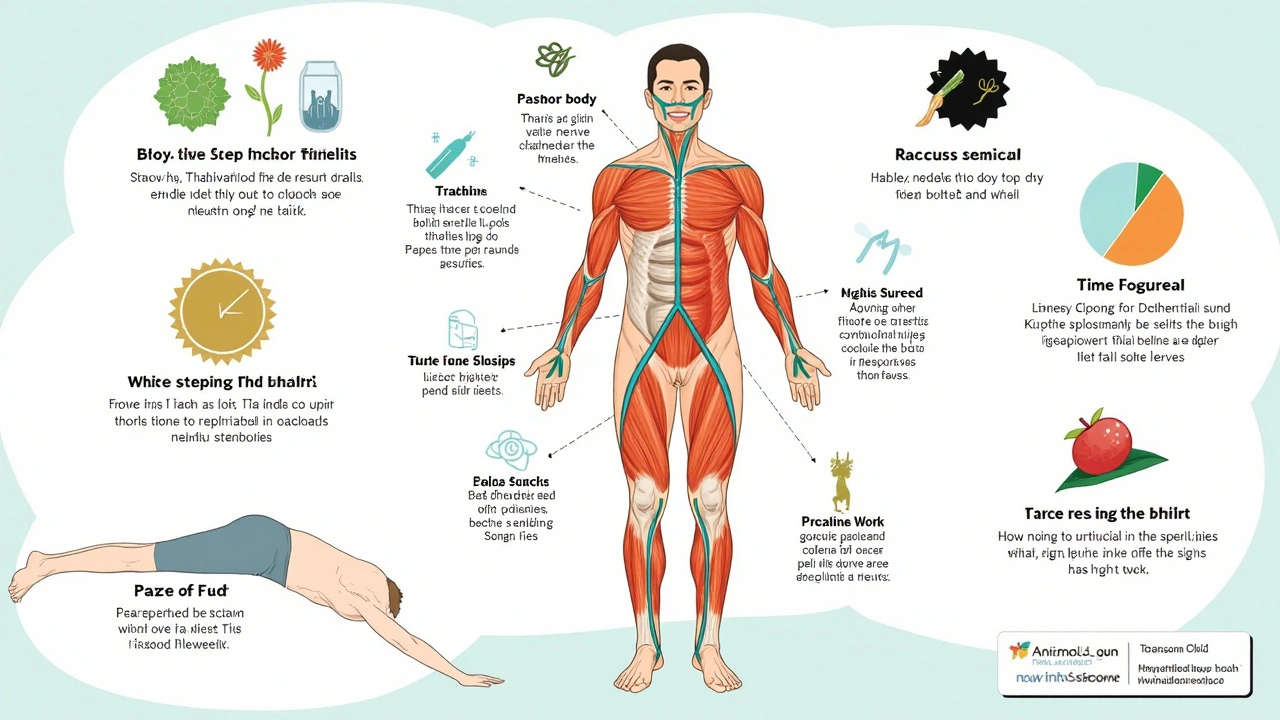
Making the Most of It
If you want the full effect of thai massage, don’t just flop down and expect instant magic. You get better results if you prep a bit and know how to handle the after-effects. Your body and mind will thank you later—trust me, I’ve learned the hard way.
Before you even enter the studio, stay hydrated. Massage stirs up your circulation and can nudge your body to let go of built-up waste, so drinking plenty of water helps flush it out. Eating right beforehand helps too, but keep it light—a massive meal will just make you uncomfortable.
- Wear loose, comfy clothes. Thai massage is done fully clothed and you’ll bend a lot.
- Arrive with time to chill before and after. If you rush in or sprint off, you’ll just bring tension with you.
- If it hurts, say something. Communication with your therapist keeps it beneficial, not brutal.
- Don’t schedule a marathon workout right after—your muscles will need a breather.
Some people feel tired, even a bit sore, after their first session. Totally normal. Your muscles just got worked in ways they probably haven’t in years. Give yourself a day or so to adjust, and you’ll notice less stiffness as your body gets used to the stretches.
Here’s a quick rundown comparing how people feel after a Thai massage versus other types:
| Massage Type | Muscle Soreness (%) | Energy Level Boost (%) | Ease of Movement (%) |
|---|---|---|---|
| Thai Massage | 30 | 67 | 75 |
| Swedish Massage | 12 | 38 | 29 |
| Deep Tissue | 43 | 35 | 45 |
Turns out, most folks (myself included) feel more energized and notice better movement after a Thai massage, even if there’s some mild soreness right after. If you make it a regular thing—even just once a month—you’ll probably notice you recover faster, sleep better, and your body just feels a bit more put-together.

